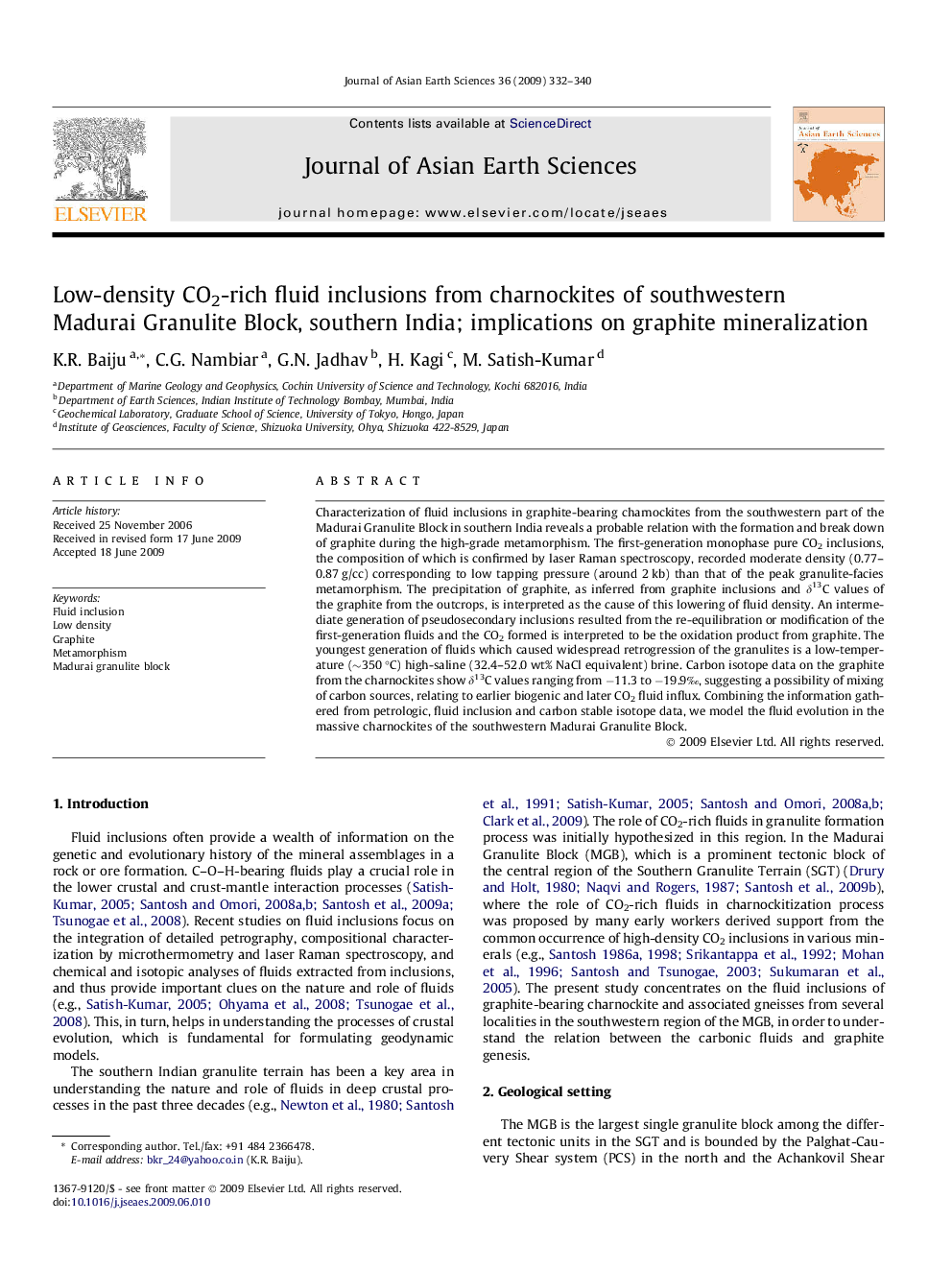| کد مقاله | کد نشریه | سال انتشار | مقاله انگلیسی | نسخه تمام متن |
|---|---|---|---|---|
| 4732313 | 1640428 | 2009 | 9 صفحه PDF | دانلود رایگان |

Characterization of fluid inclusions in graphite-bearing charnockites from the southwestern part of the Madurai Granulite Block in southern India reveals a probable relation with the formation and break down of graphite during the high-grade metamorphism. The first-generation monophase pure CO2 inclusions, the composition of which is confirmed by laser Raman spectroscopy, recorded moderate density (0.77–0.87 g/cc) corresponding to low tapping pressure (around 2 kb) than that of the peak granulite-facies metamorphism. The precipitation of graphite, as inferred from graphite inclusions and δ13C values of the graphite from the outcrops, is interpreted as the cause of this lowering of fluid density. An intermediate generation of pseudosecondary inclusions resulted from the re-equilibration or modification of the first-generation fluids and the CO2 formed is interpreted to be the oxidation product from graphite. The youngest generation of fluids which caused widespread retrogression of the granulites is a low-temperature (∼350 °C) high-saline (32.4–52.0 wt% NaCl equivalent) brine. Carbon isotope data on the graphite from the charnockites show δ13C values ranging from −11.3 to −19.9‰, suggesting a possibility of mixing of carbon sources, relating to earlier biogenic and later CO2 fluid influx. Combining the information gathered from petrologic, fluid inclusion and carbon stable isotope data, we model the fluid evolution in the massive charnockites of the southwestern Madurai Granulite Block.
Journal: Journal of Asian Earth Sciences - Volume 36, Issues 4–5, 18 October 2009, Pages 332–340